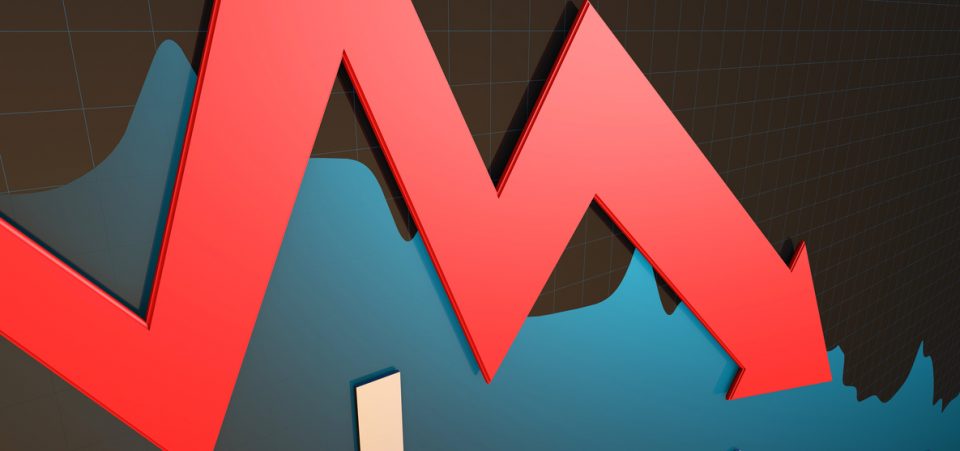U.S. Decline Is Just One of the Signs of an Imminent Stock Market Crash
One of the reasons a stock market crash has become imminent—perhaps the main reason—is that America has entered a phase of terminal decline. There are financial basics pointing to a stock market crash that certainly warrant attention.
Equities are valued too highly when investors should be more risk-averse.
Yet the few astute observers still left in the media or on Capitol Hill are drowned out by some of the most ridiculous propaganda ever conceived by creatures on this planet.
The smart voices have been warning that economic disparity has reached untenable levels in the United States. Moreover, they’ve been warning that U.S foreign policy has long been untenable from a diplomatic and, more relevant to the average American, economic point of view.
And the next major stock market crash will necessarily cause more damage than the last.
If the 2008 stock market crash and related crisis almost caused many Americans (and Europeans) to question the very nature of our western society, then the next one will certainly lead them to an existential predicament.
Perhaps nothing less than another financial catastrophe is what’s needed to reset American society, forcing it to build the courage for real change.
Donald Trump is merely the prelude to this change. Or, better, he is the most glaring symptom of the current malaise of decadence.
He reflects culturally average Americans’ (and even some not-so-average ones’) desire for someone in Washington to start paying attention to what people want—or to common sense.
Making a List and Checking It Twice
This is not to suggest that Trump is actually paying attention to the people or what they want.
Yet, he was the cleverer candidate, feigning an understanding, even a sympathy, for those who ended up voting for him in the 2016 election.
And consummate salesman that he is, Trump has made sure to keep a list of what he promised, pursuing each point and checking it off the list, just like the Santa Clauses of the best Christmas movies do.
Instead of taking a cue, a very powerful cue, from Trump, the Democratic Party has decided to pursue, with excruciating conviction no less, the old Russian game.
Their unwillingness to yield to reality is dividing Americans at a level not seen since the Civil Rights/Vietnam era.
There’s room for a more intense division, closer to the one that led to the Civil War—that is, if a war with Russia doesn’t happen first.
Anything Goes, So Long as It Avoids Confronting Reality
Simply, rather than tap into what’s hurting average Americans, the Democrats (and many Republicans) have decided that Vladimir Putin is responsible for all that ails the United States.
What’s worse is that the media and state propaganda are so strong that many Americans, including some who were once enlightened, are actually buying it.
And they’re even willing to pay an ever-higher price for it.
The association of Trump with treason, as former CIA director John O. Brennan suggested, for having participated in an official meeting with his Russian counterpart, Vladimir Putin, is merely the latest example of the establishment’s game.
From a wider lens, the mere sight of so-called liberals defending the likes of the CIA and the FBI, cheering for characters like Robert Mueller and James Comey, gives an idea of the scale of the distortion.
The Level of Decadence Is at Empire-Collapse Level
The United States, and much of the West with it, has reached a point that many historians describe as decadence.
Sir Edward Gibbon, who wrote the classic The History of the Decline and Fall of the Roman Empire, would find many parallels between the modern United States and the fatal last decades of Rome.
In Washington and in ancient Rome, the decadence has many causes. But in general terms, it’s important to note that the causes give ample warnings.
They are not single events. Rather, they’re multiple events that cause the long-term, chronic situations to tip. As it happens, that’s how a major stock market crash occurs as well.
The parallels between the conditions that triggered the downfall of Rome and present-day America are striking.
History Does Not Repeat Itself, But…
It’s not that history repeats itself, but, in the financial statistics or earnings releases, there are societal patterns that should raise the alarm.
As with all societies, beyond military and cultural invasions, it’s economic collapse that determines their ultimate demise.
The upper class of Rome was too rich compared to the average Roman. Does that sound familiar?
Some senators or patricians amassed gold, while emperors like Commodus made sure to take advantage of every coin in the vault.
Like the modern American establishment, the rich enjoyed a combination of political and economic power while the majority suffered poverty—and eventually military weakness, unable to stop armies of invaders.
And then there were the fiscal and debt issues. Rome expanded the size of its empire in order to collect more taxes, reaching a peak size in the early second century under Emperor Trajan.
But it overstretched itself militarily and began to lose pieces after that. The territorial limits shrunk and so did the tax revenue.
To compensate for the loss of income, the remaining provinces had to pay more taxes. Meanwhile, efforts to defend—let alone regain—territories failed because of a decadent leadership and a dissatisfied people.
A Waste of Hegemony
Since the fall of the Soviet Union, the United States has wasted all of its relative superiority.
No longer faced with a comparable (and undefeatable, given the mutually assured destruction potential of nuclear weapons) power, the U.S. has squandered resources on attacking small Middle Eastern powers that posed no threat.
Meanwhile, the real challenger—China—quietly kept growing economically and militarily. And the United States happily contributed to that growth, devolving much of its industrial production there.
Trump’s campaign of isolationism promised to reverse that process. He said there would be no more wasteful interventions and that American workers would take back the jobs they lost to globalization.
The Deep State, of course, has shown that it won’t let this happen.
Trump has only managed to pull off a few of his promises, among them a botched tax reform that parallels the situation of the late Roman Empire.
Therefore, no matter how high stocks may continue to go—and it seems they won’t repeat the January 2018 records—the scenario for a major system breakdown is set. And all it will take is another stock market crash.
The Signs of the Crash Are Everywhere
Beyond the historical and political considerations, the financial signs of a crash are out in the open already.
Trump’s push to impose tariffs has spread tension throughout the nervous system of the global markets.
The world justifiably fears a return of 18th-century-style trade wars. And this could have devastating results. At best, we can expect the stock markets to remain cautious.
The S&P 500 index has already dropped some 4.5% compared to record highs of January 2018.
The markets are merely looking for a pretext for a sell-off. That’s how they work.
People buy, prices go up, and greed sets in. They believe that the markets can only go higher. Until, of course, they don’t.
The wise and seasoned investors now will be the ones selling their positions in stocks that have gone up. But those are the few and far between.
Stocks Don’t Just Keep Going Up
A majority of investors, even those who use sophisticated models that are supposed to predict crashes, will focus on the fact that stocks on Wall Street have been rising since March 2009.
That’s when the U.S. economy, or financial system, started its first steps to recovery from the 2008 stock market crash in the summer of 2008. Since then, the shares have risen some 300%. And 10% of that increase occurred in the first year of Trump’s presidency.
But do the assets reflect real value?
That’s highly debatable. Indeed, the double-digit collapse (down by over 18%) of Facebook, Inc. (NASDAQ:FB) stock on July 26 suggests otherwise.
Earnings simply failed to meet the over-inflated expectations of tech investors.
Given the influence of the so-called FANG stocks—Facebook, Apple Inc. (NASDAQ:AAPL), Netflix, Inc. (NASDAQ:NFLX), and Alphabet Inc (NASDAQ:GOOG), also known as Google—on Wall Street, Facebook’s tumble might be a good enough reason to trigger a wider tech sell-off.
Then there is the average S&P return comparison with the 10-year Treasury yields.
Treasuries are considered “set it and forget it” kind of investments. They’re most valuable in times of high market volatility.
If returns on stocks aren’t high, investors simply choose to avoid the hassle of worry and switch to Treasuries.
While conditions are always different, many will have noticed that Treasury yields (now at 2.96%) are moving higher and stock returns are moving lower, even if on average they are still enticing enough to sustain greed.
In fact, there’s no need to wait for Treasury yields to match U.S. equities for a stock market crash.
The overall global economic and political picture suggests that such an event is imminent and destructive for the American economy.






